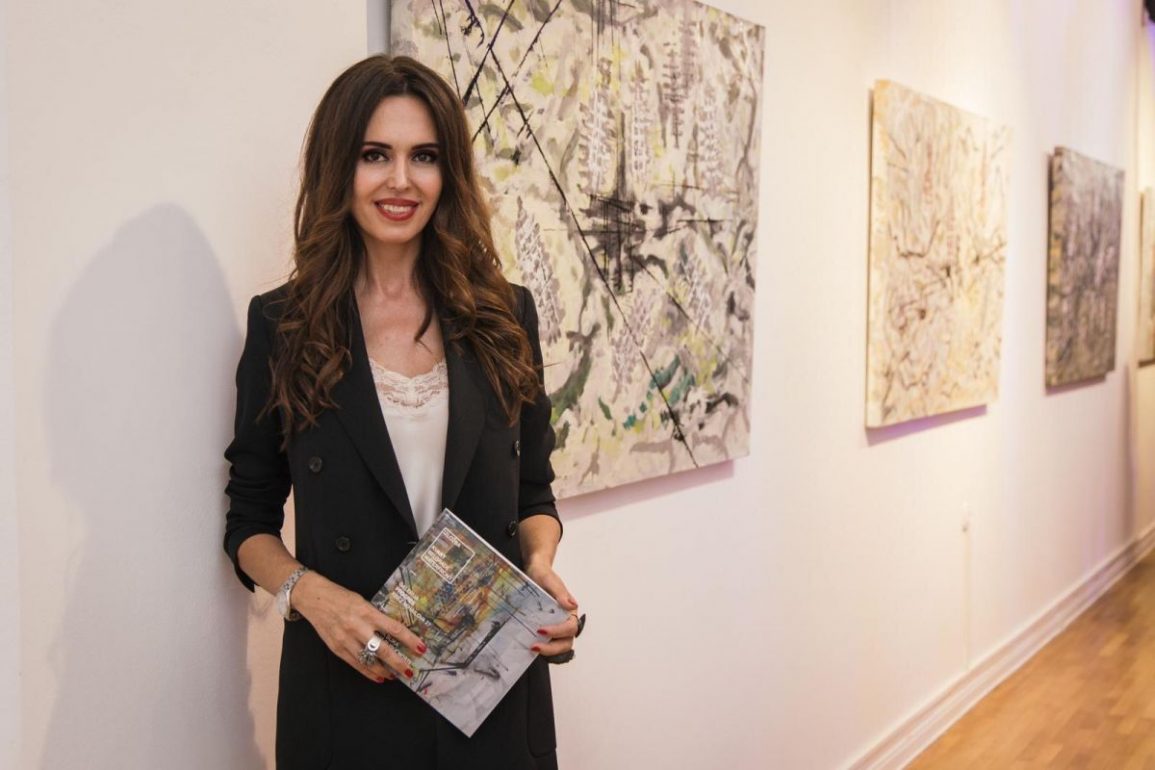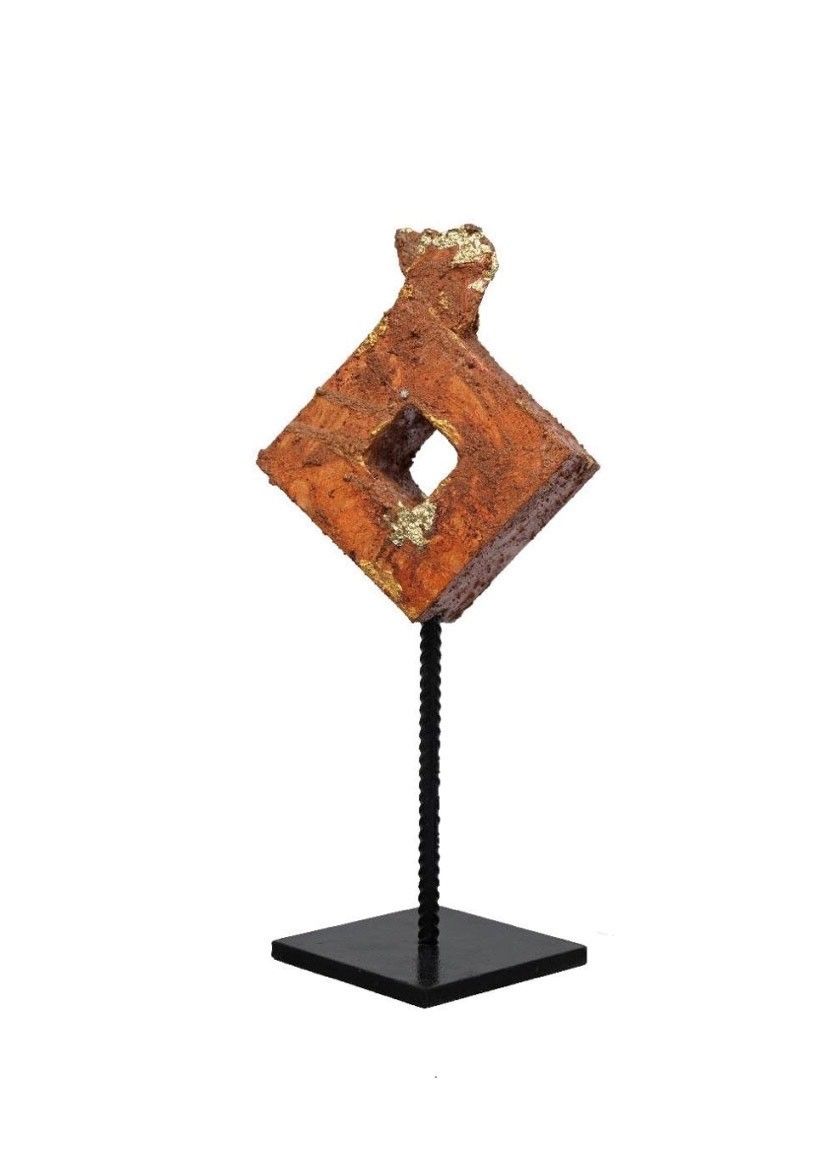Color explosions meet lines that lead out of nowhere into something that we cannot understand with the naked eye. Aleksandra Kokotović is an artist who pictures more than we can see, who materializes what is not graspable and mostly not explicable with rationally trained minds. Instead her art invites us to see beyond the lucid by diving into her abstract paintings.
The special circumstances of this year brought her work, which has been shown in Honolulu, Washington D.C. and Dubai, closer to the audience in former Yugoslavia. In 2020 her art has been shown in various places in the region, including Sarajevo, Negotino and Kavadarci in Northern Macedonia, Mostar, Stolac, Zenica, Nevesinje, Trebinje and Sremska Mitrovica. Exhibiting at these places is a matter close to her heart, because for Alexandra Kokotović, born in Sarajevo and based in Belgrade, it connects her source of inspiration with her art practice.
My life principles are respect and gratitude, so I wanted to express my affection for my esteemed ancestors, as well as for the country in which I was born.
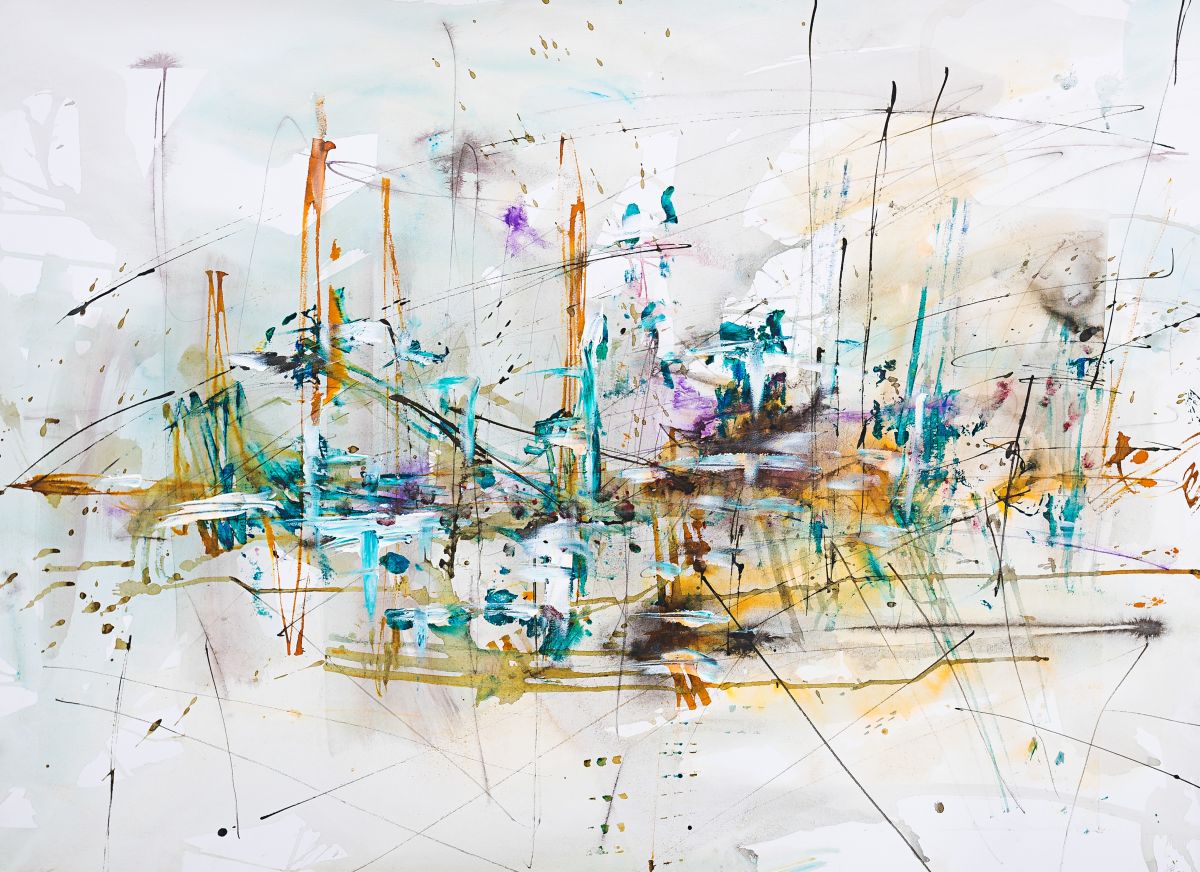
Aleksandra Kokotović’s paintings offer the spectator a world full of individual imagination and associations. Yet even though they avoid clear references, one can find a reoccurring language – energetic lines dividing up the space, vibrant color outbursts and expressive handwriting – that point to a common subject: civilizations that have gone, still which she does not locate in the past. The artist finds that time and space are just illusions of our perception in this projected universe in which we think that we exist. Everything is happening at once and in one point of space. There are endless variations of life in general and of our parallel experiences.
The past and the future do not exist. Albert Einstein made one small unproven presumption in order to prove his Theory of Relativity, but Velimir Abramović proved mathematically that time equals zero. So time does not exist. It is only the present that is real. All events that we perceive as happened in the past are actually interwoven with what we perceive as the present and with the ones that await us in ‘the future’.
In her practice Aleksandra Kokotović constantly seeks for answers about civilizations through spiritual and especially artistic ways. By doing so she was inspired mostly by quantum physics, theosophy, world religions and philosophies. She explains that among other things, she has studied the great scientist and founder of theosophy Helena Blavatsky. Aleksandra has read a lot about the way of life of Aboriginal tribes that have a very highly developed spiritual principle.
I have always been interested in old and lost civilizations and their attitude towards life. All the answers lead me inwards, to the insight that we all carry all the knowledge of the world within us. The life of missing civilizations was conducted on that platform, awareness of energy, spirituality and unity of everything in the cosmos.
There is one vibratory field that connects all things. This balance what Buddha and the cabalist called the Middle Way, what Aristotle called the Golden Mean, is the birth right of every human being. It is the common root of all religions and link between our inner worlds and outer worlds. What happens to one of us, happens to everyone.
I have always been interested in old and lost civilizations and their attitude towards life. All the answers lead me inwards, to the insight that we all carry all the knowledge of the world within us
Einstein’s special theory of relativity says that two distinct events cannot be considered to occur at the same time absolutely if those events are separated in space. Rather it depends on the observer’s reference frame. Aleksandra Kokotović’s works often relate to traces of former civilizations like the Eastern Islands, the Nazca lines, pyramids in Egypt, Bosnia, China, Mexico, Indonesia and Mauritius or pre-historic cave paintings questioning the conventional linearity of their occurrence. What can the exploration of past civilizations illuminate for us today preoccupied and constantly sidetracked with fast life based on technological?
It clearly shows us that our civilization is not the greatest that ever existed on our planet and that it runs in cycles (or maybe in parallel). In a way it repeats itself but every time a little differently. Perhaps some of those ‘past’ civilizations are maybe from ‘the future’. We should try to learn from them as much as possible. Take what they had/have/will have that is good and learn from their mistakes, compare our problems with theirs and try to find new better solutions.
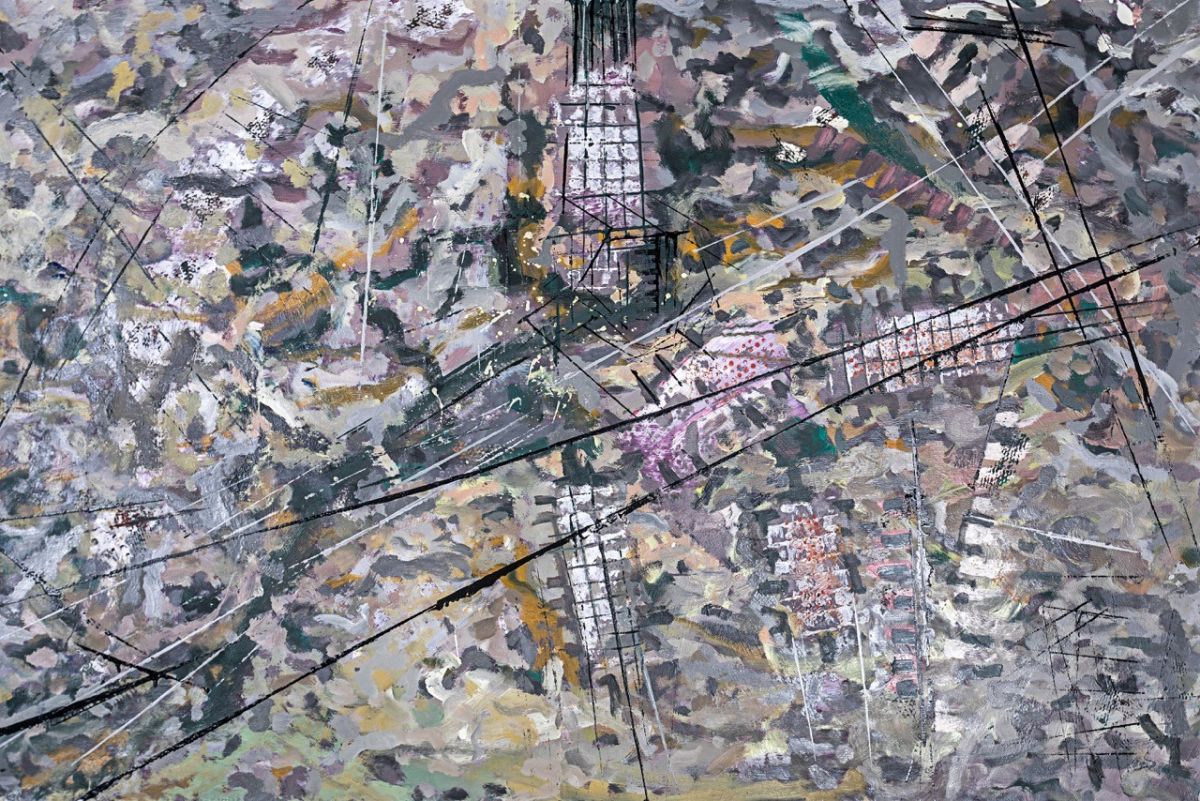
For understanding Kokotović’s visual language, the spiritual world it expresses is an important feature. Her art stresses the spiritual values that usually are underestimated for the sake of a more rational, scientific and factual consideration of the world.
Unfortunately, we live in a materialistically preoccupied world that acknowledges only what we humans can register with our sensory organs, mostly seeing and hearing. Today’s science only admits results in this field of five senses but the greatest scientist of all times, Nikola Tesla, said: ‘Once science starts exploring the spiritual, it will advance in ten years more than in the whole of human history.’
In one of her works she references Zoomorphism, a form of art that imagines humans as non-human animals.
Ancient shamanic tribes used to represent human spirits as animals and in that way they would give them characteristics and powers of that animal. Also, in ancient Egypt there are vast drawings and engravings depicting demi-gods that had taken morfic human-animal forms and there are gods in India like Ganesh and Hanuman. Some of these were inspiration for certain paintings and drawings.
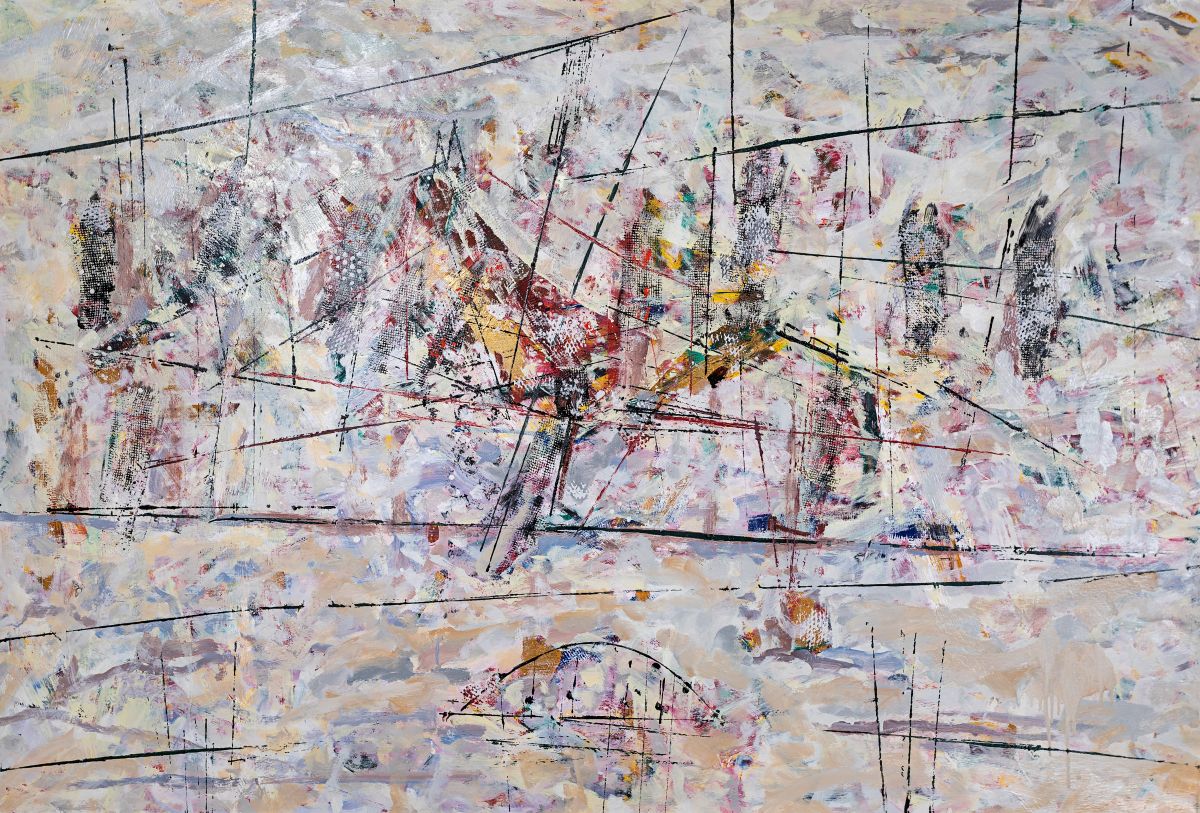
The artist mostly paints her works with the canvas lying on the ground. Working horizontally opens up ways for her to interact with the material.
Clearly, this is an individual matter. My communication with the canvas is much more intimate and clear when my material is laid horizontally. I always do several paintings at the same time, and in that position it is easier for me to master the canvas and conquer it.
When I do informel, the canvas needs to be laid, and when I paint with oil, recognizable lines run through most of my paintings, as well as other elements that are more convenient for me to perform again in a horizontal position, because I do everything organically. Only the last details I carry out at the easel.
Besides her paintings, in her sculptures she infuses different material into the colors and sculpture material. The used material expresses an ecological dimension that brings forward a questioning of our throwaway society. She explains the decision to use discarded material:
Most of my sculptures are made from recycled materials. I try to make an artwork from the material that is thrown away. Certain sculptures were made of wood, metal and earth pigment from the ‘Devil’s Town’ (the naturally formed bizarre shaped place in south Serbia – Đavolja Varoš), and these materials did not undergo much intervention, while, for example, stone sculptures had the shape of wooden sculptures, so a lot is being done on them. The tonality of the sculptures themselves is related to the earth and natural materials, which I find in my environment, depending on which part of the planet I am on. In a creative way, by combining art and nature, I strive to preserve it. Different waste materials and environmental contents can be a significant factor in raising environmental awareness. Humanity is on the verge of extinction, facing great global changes. Only with a general, comprehensive and planned action can we somewhat correct the disturbed ecological balance.
Unfortunately, we live in a materialistically preoccupied world that acknowledges only what we humans can register with our sensory organs, mostly seeing and hearing
Art owns a power to convey awareness about things that would otherwise be silenced by the rationalization and commodification of our everyday life. Therefore Aleksandra Kokotović sees artists as a narrators who create attention:
Artists are a certain type of speakers, thanks to their creativity, freedom of perception and expression through their works, through which they get the opportunity to express their views, reflections and deeper knowledge. Artist is narrator. The artists’ moral duty is to change for the better, themselves, society and the existence of life on our planet in general.
Plato said that there are two natures in human life; the lower, which tends to attain immortality by the birth of children, while the higher leaves more permanent offspring as do poets and artists. Plato gave affection to a human being who attains immortality and produces true virtue in contact with beauty itself, and says of this: ‘All men are pregnant both in body and soul, and when they come to a certain state then they long to give birth to our nature. And to be born is not possible in ugliness but in beauty.’
The artist, today based in Belgrade and Sarajevo, has lived at several places, including Beirut, the USA and London, and her exhibition list includes Dubai, Washington D.C. and Jacksonville. Yet exhibiting in the region of former Yugoslavia makes up an important part of her recent exhibition history. Showing her work for example in Sarajevo, Subotica, Stolac, Trebinje, Pančevo or Zenica, offered opportunities to get in touch with various local audiences.
I want to communicate with my works in different environments. I am convinced that everywhere I can meet people with whom I can have inspiring conversations, no matter if educated artistically or not. To get into exchange with them is like you’re at a pure spring.
It seems to me that people in decentral environments are more connected to nature and see artistic expressions more clearly. In fact they experience details with great attention – as if they understand aesthetics fuller than people trained and working in the arts. Often they feel something I couldn’t see. They spend a lot of time observing each piece of art.
In contrast in large centers, in which art lovers, creators and events are more concentrated, one gets the impression that people mechanically look at works and do not go deeper into the essence of creativity.
Artists are a certain type of speakers, thanks to their creativity, freedom of perception and expression through their works, through which they get the opportunity to express their views, reflections and deeper knowledge
Art holds many possibilities and is a safe harbor that outlasts time. Since the beginning of the pandemic, many of Aleksandra Kokotović’s exhibitions have been postponed and are now waiting for better days to come. The current restrictions due to the COVID-19 pandemic caused a slowdown in many areas of life. She still happened to open 15 solo exhibitions in highly renowned institutions since then nevertheless. For Kokotović, this situation directed attention to something that should be in focus much more anyway, namely the essential, which is expressed and immortalized by something enduring like art.
Life is a moment, and the painting is eternal. I opt for both eternity and that moment. COVID-19 is just one momentum of our inattention.
In contrast art is elusive, deep, free, always new. Art has an educational function. An inexhaustible search for spiritual values. True art needs to transform us; it needs to achieve inner ethics and aesthetics. As an abstract painter, I separate the essential from the irrelevant. In this I find weight, center, energy, and metaphysical perception. I try to call what is deepest in me absolute form or pure spirit.
I communicate with my soul always.

